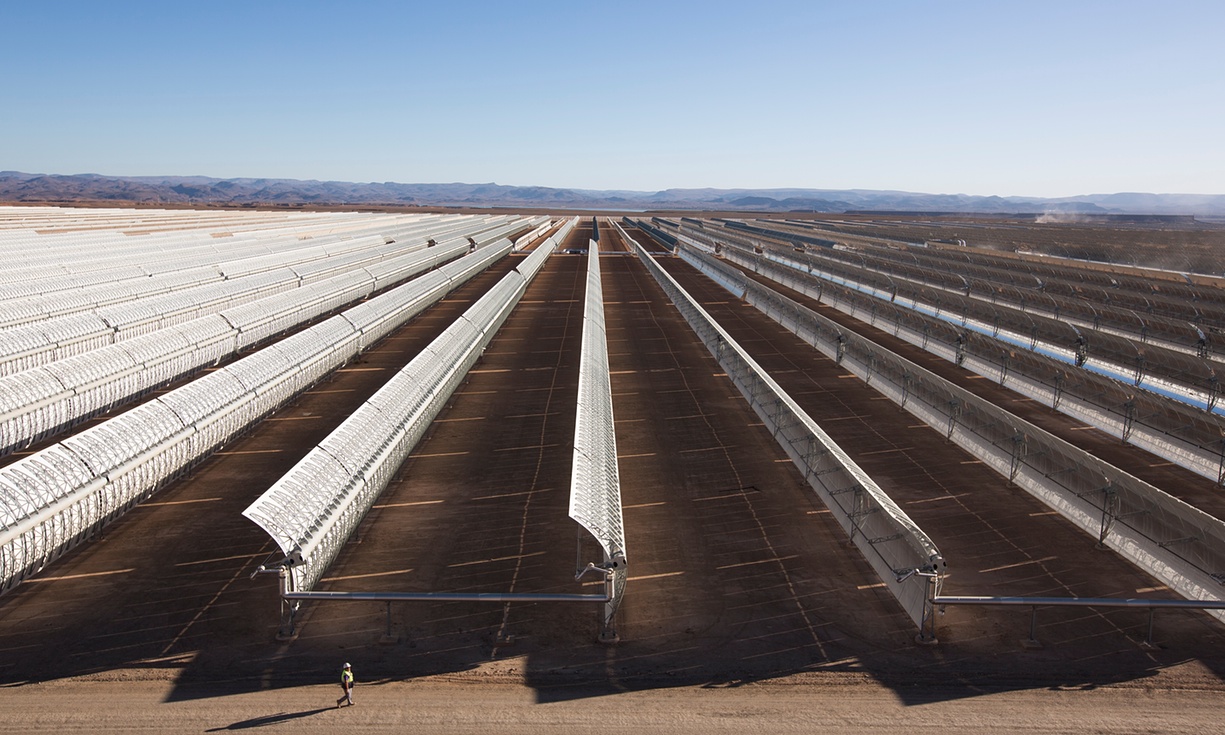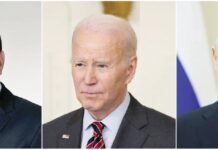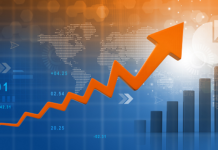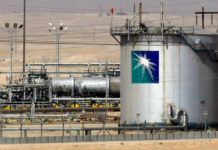By Doaa Hussein
RABAT: A bright market in a tepid middle-eastern economic environment, Morocco had shrewdly devoted its attention towards green energy and applied exalted programmes to sustain huge chunks of its energy consumption through renewable resources by the near future … its latest ongoing project is expected to transform the country’s economy and lift-up living standards.
The southern city of Ouarzazate is now being prepared to launch the largest concentrated solar plant in the world, which will primarily supply a million Moroccan homes with solar energy by its accomplishment. Ouarzazate, better known as “the door of the desert”, is not only a land of Hollywood blockbusters such as Lawrence of Arabia and the Mummy, but can also be described as the land of sun, as it has one of the highest rates of solar insulation on earth (about 3,600 hours per year). Morocco started this $9 billion project in an effort to insure the country’s future energy consumption and develop a modernized Moroccan environment.
The project is a complex of four interconnected solar mega plants, which is going to provide Morocco (beside the aid of hydro and wind), with 42% of its electricity from renewable resources by 2020, which is considered a real hike in renewable energy generating records.
Morocco’s Environment Minister, Hakima El-Haite, believes the solar energy would probably have a regional impact this century, similar to the impact oil had during the course of the past one, according to The Guardian, she added “We are very proud of this project, I think it is the most important solar plant in the world.”
“We are not an oil producer. We import 94% of our energy as fossil fuels from abroad and that has big consequences for our state budget,” El-Haite further described, “we also used to subsidize fossil fuels which have a heavy cost, so when we heard about the potential of solar energy, we thought; why not?”
The First stage is a great step, The Noor solar project, translated “light” in English, has 3 main phases, the first phase’s (Noor1) operational date is due next month, covering 30sq/km at the base of the Atlas. Its 800 rows consisting of 500,000 crescent shaped solar mirrors, tracing the sun’s enormous energy, the stage will provide 160MW (megawatts), around quarter the capacity of the project’s planned 580 MW of electricity. Noor1 uses a mirror technology that is less common than photovoltaic panels used on many roof tops across the globe. It is more expensive, as it has the ability to proceed on with generating power even after the sun sets…Each mirror is 12m high, installed on steel pipelines carrying an HTF (Heat transfer solution), that is warmed up-to 393 Celsius, before entering heat engines, where steam is created as a result of mixing it with water, steam is then pressurized to turn generator tribunes on. The HTF, which is made of thermal oil solutions, is pumped to heat tanks containing molten sand that stores energy up-to 3 hrs, providing homes with electricity to be bright at nights.
Technicians say that the Noor2 and 3 plants, due to open in 2017, will store energy for up-to eight hours, which boosts possibilities of 24/7 solar energy supply in the southern desert and surrounding regions. Paddy Padmanathan of Saudi-owned ACWA Power, which is running the thermal project, said to the BBC describing the plant “Whether you are an engineer or not, any passer-by is simply stunned by it.” The project costs about $9 bn, most of which pumped by International sources, such as the European Investment Bank, the World Bank, and others, supported by guarantees from the Moroccan government. Morocco’s successor, King Mohammed VI, have prevented himself the cost of being transferred to energy consumers.
Probabilities of exporting it is really a paradox that Morocco, which is considered the largest energy Importer in the Middle East this year, is planning to export solar energy to the region by the next year.
“We are already involved in high tension transportation lines to cover the full south of Morocco and Mauritania as a first step”, Ahmed Baroudi, manager of Society of Energy Investments, the national renewable energy investment firm, reported to the guardian. On behalf of the Moroccan solar energy agency (Masen), negotiations are ongoing between Tunisia and Morocco to sell their solar power across Mediterranean coastal countries, and this will be their key goal.
The National commitment to shielding climate during the Paris climate conference, Morocco has pledged to eliminate CO2 emissions 32% by 2030. This is a part of its national commitment to climate protection . As said before, the country imports about 94% of its annual energy, but the new plant will make it more energy-independent by reducing its imports of oil by 2.5m tons. Morocco is now working on using its solar power to independently execute urgent projects like water desalination and others, in a country that is being hit by droughts as the climate warms. The government is paying great concern to the launching of its new project, the most advanced renewable energy programme in the Middle East and North African region.












